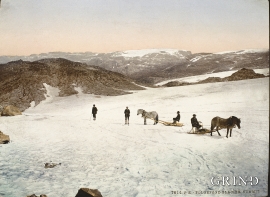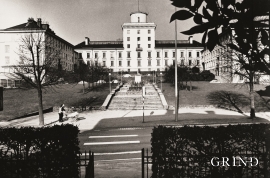
Last Ice Age
The continental glacier that covered Hordaland was like a great power that had decisive influence over our natural history. The glaciers which at the beginning of the last ice age (more than 100,000 years ago) grew out from Folgefonna, Hardangerjøkulen and other mountainous areas, chased animals and birds, and most likely also humans in front of their paths. Small animals, plants and trees were mercilessly run over and crushed to powder under the thick ice. Even the hard bedrock got torn up and scoured by the ice, which did not give up before it reached the outer edges of the continental shelf. First 14,500 years ago, the climate became mild enough that the outer coastal strip of Hordaland once again became ice-free. Plants, animals and people started to migrate in to a landscape that was golden, with flecks of grey moraine and sand between smoothly polished rock outcrops - as our present warm interglacial was born.

Glaciers
Two of Norway's - and mainland Europe's - largest glaciers, in addition to a number of smaller glaciers, lie in Hordaland. This eternal ice is easily accessible, and easy to be enchanted with. A National Day parade goes to the top of the Hardanger glacier, and Folgefonna glacier has lift assistance at the summer ski centre in Jondal.

The Fjord- a blue lung
The West Coast of Norway, with its deep fjords that carve far into the high mountains, is one of the most characteristic and - many would say - beautiful landscapes in Europe. It is not without reason that tourists come from around the world each year to see the fjords of Norway.

The pioneers who discovered the natural history of Hordaland
When Professor Emeritus Knut Fægri (1909-2001) was asked to write the book's chapter about the natural science pioneers of Hordaland, he answered unequivocally, "yes". It was one of the last things he wrote before he died, at the age of 92. In typical Fægri language he presents some of the scholars who, in the time before the University of Bergen was founded, led the way in studying the natural science of The West Country.


